
All categories
Featured selections
Trade Assurance
Buyer Central
Help Center
Get the app
Become a supplier

(1076 products available)













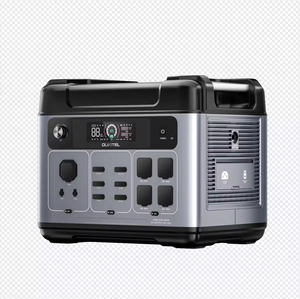
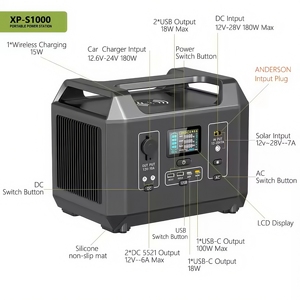
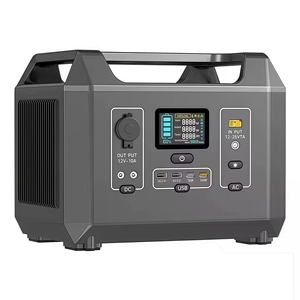
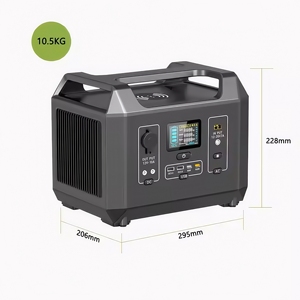

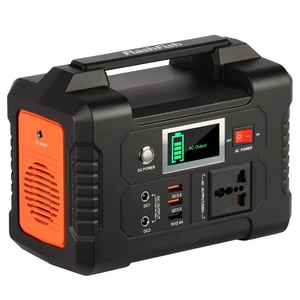








There are two main types of car power inverters: modified sine wave and pure sine wave inverters.
This type of inverter provides a power output that’s suitable for most common electronic devices. It converts the DC power from a car battery into AC power by first converting DC power into square wave power. This square wave is then adjusted to resemble a sine wave. This process makes it easier and cheaper to produce, leading to its widespread use over the years.
However, the power output of a modified sine wave inverter is not as stable as that of a pure sine wave inverter. It may cause some sensitive devices, such as laptops, printers, and certain audio equipment, to malfunction or experience slower charging. Still, a modified sine wave inverter remains more affordable, making it a suitable option for powering basic equipment like phone chargers, small TVs, and portable game consoles.
This inverter produces a smooth and consistent AC power output that closely resembles the electrical power supplied by the utility grid. It goes through a more complex process of converting DC power to AC power, resulting in a higher-quality power output. Although pure sine wave inverters are expensive, their consistent power output makes them ideal for sensitive electronic devices.
These devices include medical equipment, laboratory instruments, and high-end electronics like laptops and smartphones. These devices require stable and clean energy to operate correctly. Buyers should opt for pure sine wave inverters if they plan to power more sophisticated or sensitive electronic equipment from their car’s DC battery.
Car power inverters have various industrial applications, especially in fields that require mobile power solutions.
Workers in remote areas, such as technicians, and service engineers, often require the use of laptops and diagnostic equipment. Car power inverters provide the necessary power to keep these devices running, ensuring efficiency in field operations. Construction sites, and HVAC technicians, often work in locations without easy access to traditional power sources. In these situations, car power inverters deliver the electricity needed to operate power tools, work lights, and other essential equipment.
Police, ambulance crews, and firefighters frequently work in environments where power outlets are unavailable. In such scenarios, car power inverters ensure radios, laptops, medical devices, and other vital equipment are charged and operational. Car power inverters are often used during outdoor events to power temporary workstations, PA systems, and other equipment before or after the event.
Sales representatives and service technicians frequently use laptops or tablets in their cars. These devices need to be powered continuously, and car inverters are perfect for providing this power. Similarly, technicians and mechanics working in mobile service vans use inverters to power tools and diagnostic equipment.
Many industries use remote monitoring systems that rely on inverters to maintain power in areas without direct access to electrical infrastructure. These monitoring systems may be situated on oil rigs, in remote weather stations, or on telecommunications towers. With a constant power supply, the data-gathering devices can continue functioning as required.
The primary specifications/features of a car inverter include:
Power output
A 250-watt car inverter is suitable for users intending to power multiple devices simultaneously or a single device that requires moderate power. They commonly include USB ports and AC outlets.
Input voltage range
Most inverters are designed to operate efficiently with a car battery. This means they have to tolerate slight voltage variations, usually from 11 to 15 volts.
Waveform type
A 250-watt car inverter is most likely a modified sine wave or a pure sine wave. While the former is more affordable and efficiently powers basic electronics, the latter is ideal for sensitive devices that require stable power.
USB charging ports
Many 250-watt inverters have integrated USB ports. These allow users to charge mobile devices like smartphones and tablets directly without needing separate adapters.
AC outlets
Inverters with AC outlets offer users the versatility to plug in standard household electrical appliances. These appliances may include small fans, laptops, or portable kitchen equipment.
Efficiency
Operational efficiency indicates how effectively an inverter converts DC power from a car battery into AC power. Top-quality inverters generally have efficiency ratings above 80%. This means a small percentage of power is lost as heat during the conversion process.
Compact and portable design
Most car power inverters are built for portability and ease of use. To enhance portability, manufacturers may employ lightweight materials in their construction. To make these inverters easily transportable, they may also have compact designs. Many of them also have mounting options for secure installation in vehicles. Yet, for convenience, some models are designed to simply plug into the car’s cigarette lighter.
Safety features
Common safety features include overload protection, short circuit protection, and low battery voltage shutdown. These ensure user and device safety during the inverter's operation. In other words, they cut off power or shut down the inverter when dangerous conditions are detected. This prevents damage to both the inverter and the connected devices.
The installation process will largely depend on the kind of car power inverter bought. For inverters designed to plug into a vehicle’s cigarette lighter, the installation process is rather minimal. Users simply need to plug the inverter into the cigarette lighter or 12V socket of their choice. Next, they have to connect their devices using the built-in AC or USB ports.
However, for more powerful inverters or those that need direct wiring to the car battery, users have to follow these steps:
Choose an inverter location
Look for a spot in the vehicle where the inverter can be securely mounted. The location should be near the car battery and have enough space for the inverter.
Install the mounting bracket
Most 250-watt inverters come with mounting brackets. Securely attach the bracket to the chosen location. Use screws or self-adhesive materials, depending on the vehicle's surface and the bracket's design.
Disconnect the car battery
To ensure safety, always disconnect the vehicle’s negative terminal before working on electrical components. This prevents any risk of electric shock or short circuits.
Connect the positive cable
Locate the DC terminal on the car power inverter. Connect one end of the red (positive) cable to this terminal. The other end needs to be connected to the car battery. First, attach it to the positive (+) terminal of the battery.
Secure the negative cable
Find the negative (black) cable and connect it to the car inverter’s DC terminal. Then, attach the other end to the vehicle’s chassis or the negative (-) terminal of the battery.
Reconnect the car battery
After securing both cables, the next step is to reconnect the car battery by reattaching the negative terminal. Ensure it’s tightly secured, then proceed to power the inverter on to test if it’s working correctly.
Test the inverter
Finally, plug in a small device like a phone charger or laptop to see if the inverter is successfully powering it. The device will indicate if the inverter is providing electricity by charging or turning on.
Users should ensure the inverter is regularly cleaned. The cleaning process requires first turning off the inverter and disconnecting it from all devices. This will help prevent accidental damage or electric shock. During the cleaning process, use a soft, damp cloth to wipe the exterior of the inverter. Avoid using harsh chemicals or abrasive materials that could scratch or damage the device. They also have to ensure they’re regularly inspecting the cables.
Frequent inspections ensure the cables are free of frays, cuts, or excessive wear. Damaged cables can cause poor performance, and in some cases, be a safety hazard. Also, visual check the inverter for signs of wear or damage. Inverters are often exposed to harsh conditions, and constant use will eventually degrade them. Furthermore, Inverters have to be mounted securely to prevent excessive vibration during vehicle movement. The vibration will affect the internal components and reduce the device's efficiency.
Users should ensure they always check the car battery regularly. This ensures the inverter is receiving proper voltage during use. Also, overheating is one of the leading causes of inverter failure. Keep the device in well-ventilated areas during use to prevent overheating. Overheating will damage the internal components, leading to reduced performance or total device failure. Lastly, car power inverters have to be professionally serviced at least once a year. Technicians will conduct a thorough inspection and replacement of worn parts to keep the device in good working condition.
Due to the increasing number of devices that require constant power, car power inverters are rapidly gaining popularity. So, to help B2B buyers make the right purchasing decisions, here are the three essential quality, safety, and tech considerations to evaluate.
Quality assurance is a vital consideration, especially when procuring inverters in bulk. In low-quality Manufacturing scenarios, such as using inferior electronic components, may result in unstable output. This, in turn, can damage sensitive electronic devices that users may be powering with the inverter. Quality control is often achieved by purchasing inverters from established, reputable companies. B2B buyers should also check product reviews to confirm other customers' succesful online experiences.
Quality inverters are generally fitted with protective features. They are essential for ensuring safe operation under various load conditions. These features typically include over-voltage protection, over-current protection, and thermal shutdown. These protect both the inverter and the devices connected to it from potential damage. For example, thermal shutdown will automatically cut off power when overheating is detected. This helps prevent fires and damage to the inverter and connected devices.
Safety is also crucial, especially if the inverters will be used with industrial equipment. One of the most important factors contributing to safety is the presence of overload protection. This feature shuts down or reduces power output when the connected devices exceed the inverter's wattage capacity, preventing potential hazards like electric shocks or fires. In contrast, short-circuit protection immediately disconnects power from devices experiencing short circuits. By doing this, it minimizes the risk of sparks or smoke.
Inverters that feature low-voltage shutdown are also great. They cut off power to the connected devices when the car’s battery voltage falls below a certain threshold. This ensures users don’t drain their car batteries to dangerously low levels. When this happens, they risk adverse effects on their battery health or even loss of power in the vehicle. Users can also effectively manage large electrical loads with inverters that have built-in fuse or circuit breaker protection. This stops the current flow before any critical damage is done.
Rebooting technology in manufacturing will improve the reliability, efficiency, and safety of car inverters. Many modern batteries now come with smart ICs. These automatically detect and adjust the output voltage and frequency parameters during the production process to match the device's requirements. This protects the device from damage due to incorrect voltage or frequency.
Technology also boosts industrial efficiency, and buyers are increasingly opting for automatic online auction platforms to get the best bargains in a timely manner. As previously mentioned, USB charging ports have become the mainstay in the ever-changing inverter world. They provide additional convenience for charging personal electronics without requiring separate outlets. Besides these features, manufacturers are also designing inverters with wireless connectivity capabilities.
This allows users to monitor and manage inverter performance through mobile apps. With such connectivity, users can potentially identify issues before they become serious problems.
A1. Inverters will convert the direct current (DC) produced by renewable energy sources like solar or wind into alternating current (AC). This makes the energy usable for everyday appliances and feeds excess power back into the grid.
A2. Although a car power inverter can be left plugged into a car, it's vital to ensure the car's battery doesn’t drain. To avoid this, remove or unplug the inverter when it’s not in use.
A3. A 250W inverter is suitable for small tasks, such as charging laptops, powering small fans, or running devices with low power requirements.
A4. A 250W inverter will run on a battery for as long as the required power to operate the connected devices doesn’t exceed the battery capacity.